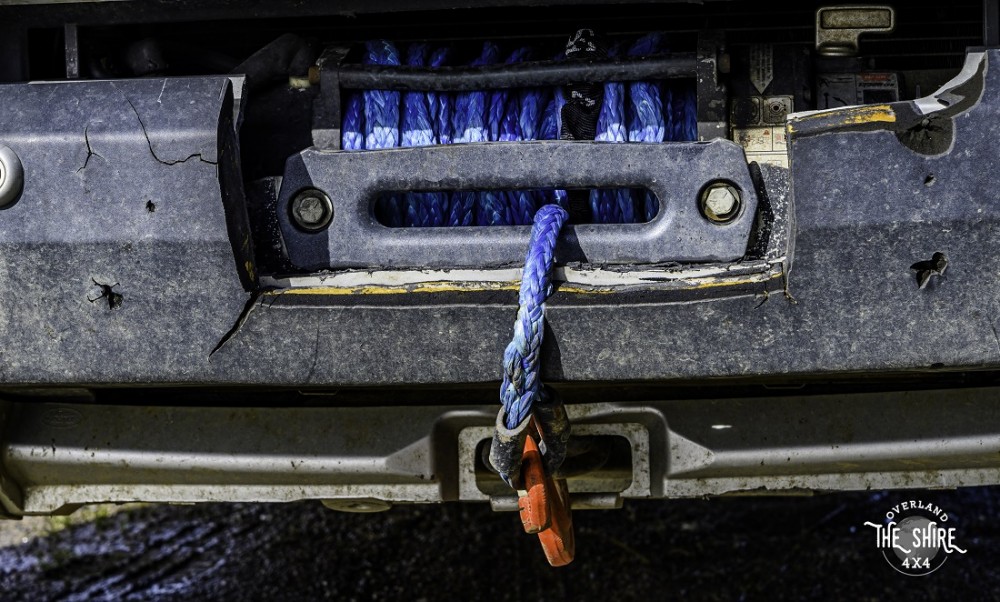
Rear lock diff or rear winch? That is the question
Rear lock diff or rear winch? Like all good discussions, this emerged following a dinnertime route, camped out under a tarpaulin in the faint light over a few beers. It was then that it occurred to me to mention I was thinking of fitting a rear lock on the Land Rover Defender, to which a friend rapped out that a rear winch would be better. The debate was underway.
Before proceeding further, I should state that my Land Rover Defender is already fitted with a front winch, which is why the discussion focused on the rear part. There’s no need to dwell on the fact that I swiftly came out in defence of my argument that fitting a “rear lock was the best decision to take”.
At all times I maintained that fitting a rear lock is an active safety measure whose purpose is to avoid getting stuck under certain circumstances. I insisted that I thought it more important to take active measures that would prevent me getting stuck before taking any exclusively passive measures, insofar as these would come into play once one had got stuck. I still think it’s better to try and prevent any mishaps and, if there any, be able to deal with it. The first step when faced with a problem is to try and prevent it happening in the first place.
Furthermore, and considering my financial resources are limited, I don’t fancy paying for both alternatives and felt clear that the rear lock would doubtless be the best option, or even the only one. As I said, I think it’s best to take all the steps needed to prevent myself from getting stuck – after that, it’ll be in God’s hands, but it’s worth trying to prevent for now.
For his part, my friend stressed that especially in the case of those of us who are in the bad habit of heading off alone on routes, it would be better to fit a winch or rear capstan that would ensure greater capacity for self-rescue under any circumstances. I insisted that it’s more important to have more resources available to be able to get out of trouble than take further measures to ensure we don’t end up getting stuck. I also added that a rear lock is no guarantee of not getting stuck. It wouldn’t be the first or last time that I’d got stuck with all the locks, and that’s why it’s more important to have a rear winch that gives us more options to get out of the fix.
That was when I reminded them of my most recent experience of getting stuck in mud in Burgos, Spain, on land between vegetable gardens that were seemingly, superficially dry – not in vain was it the month of June. Then came the surprise when the first layer of dry mud broke to reveal a quagmire from which it was impossible to get out. On that occasion, the front winch which my car was fitted with – in this case, the Land Rover Discovery 3 – proved to be of no use at all. I was on the flat plains of Burgos without a single tree in sight to which I could attach the winch. I recalled how I tried to fasten the capstan hook to a large stone – the only anchorage possibility existing – and how, when starting to take in the cable, instead of the car emerging from the mud, it was the rock that moved forward. This made it clear to me that the winch served no purpose under a certain given circumstance, and that the only solution was to seek help from a tractor driven by a farmer who was in the vicinity.
(Here’s the video in which you can see that the land and weather appeared to be dry)
I was convinced that the best option on that occasion would have been to be equipped with a back lock to prevent me getting stuck, although to be honest, I never thought there would be such a quagmire under the dry mud. It seems it’s an area of aquifers – the farmer who ended up rescuing me told me that, when he was a boy, it was covered by a small lake that dried up from time to time, rather than nowadays, when it nearly always seems to be dry.
Following a long discussion, we came to the conclusion that, as far as possible, the best option would be to count on both alternatives, and we even ended up agreeing that some ground anchorage needed to be carried in any event for circumstances like the one I found myself in. Having said that, as for when financial resources are scarce and one has to decide between one alternative or the other, we couldn’t reach agreement. We both continued to defend our theses without finding common ground.
As yet, I still haven’t taken any firm decision, although I still believe that, if it’s a case of fitting one of the two, the rear lock remains the best option. This doesn’t exclude the fact, with sufficient financial resources, I don’t rule out fitting both alternatives in the Defender.
And you? If you had to choose between rear lock or rear winch, what would it be?